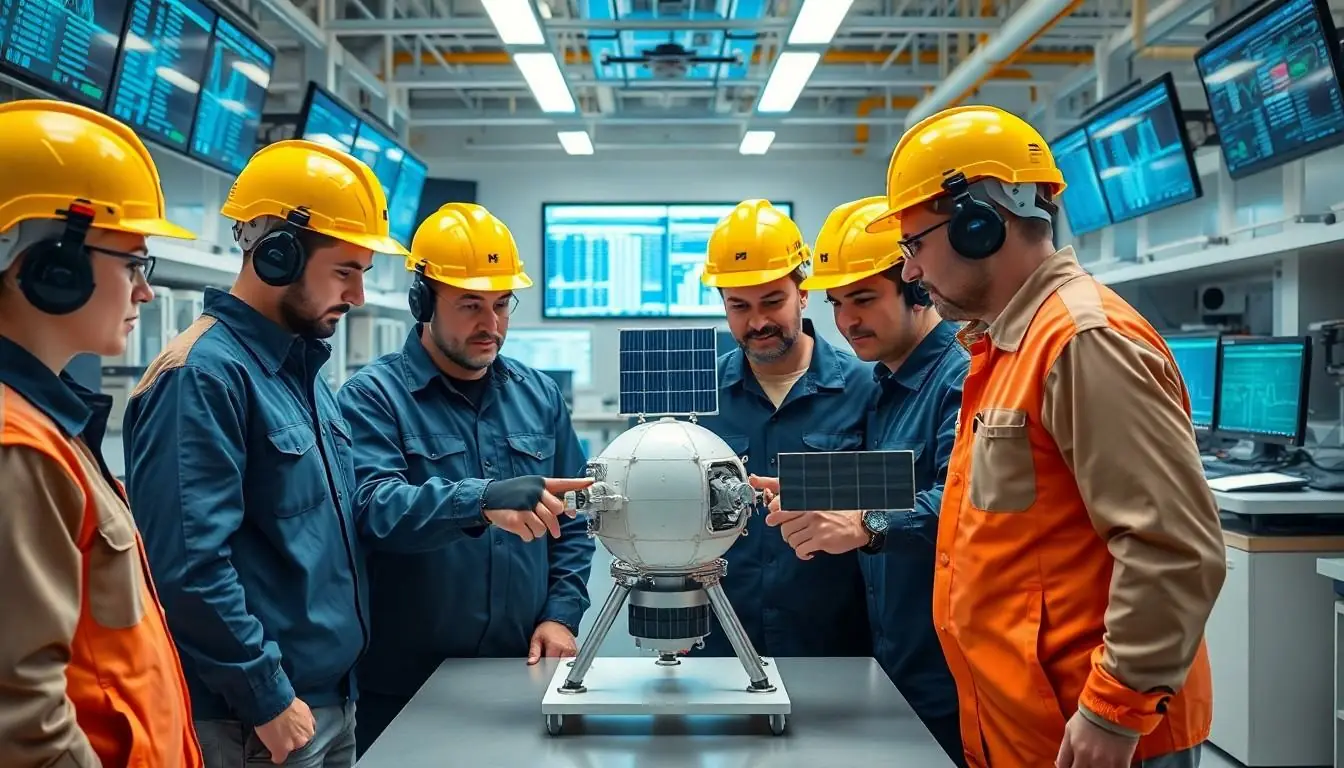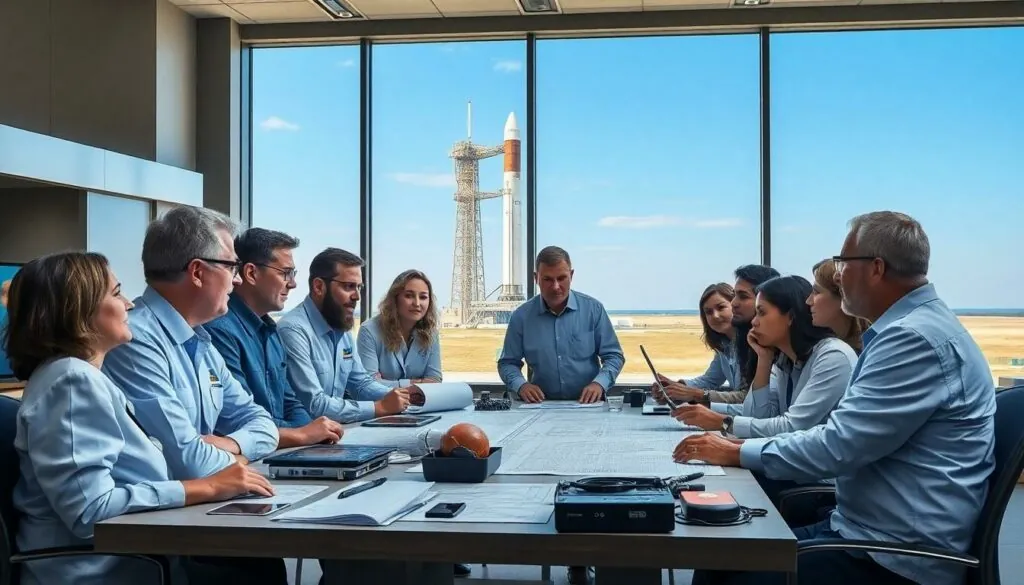Table of Contents
ToggleThe space technology industry is blasting off like a rocket, and it’s not just for the sci-fi enthusiasts anymore. From satellite communications to space exploration, this sector is reshaping how we connect and explore our universe. Imagine sending a selfie from Mars or streaming your favorite show from a satellite orbiting Earth—sounds like a dream, right?
Overview of Space Technology Industry
The space technology industry has gained significant momentum, revolutionizing satellite communications and exploration. Innovations in this field enhance connectivity while expanding humanity’s reach into the cosmos.
Definition and Scope
Space technology encompasses a wide range of disciplines, including spacecraft design, satellite deployment, and space exploration tools. This industry plays a crucial role in advancing technologies that enable tasks such as Earth observation, telecommunications, and scientific research. Emerging areas like asteroid mining and space tourism also illustrate the broadening scope of this industry. Collaboration among government agencies and private companies drives innovation, making it a dynamic sector that continually evolves with new advancements.
Key Players in the Industry
Many key players, including both private and government entities, shape the space technology landscape. NASA represents a cornerstone of U.S. efforts in space exploration, conducting missions that expand knowledge and capabilities. Companies like SpaceX and Blue Origin are redefining commercial space travel and satellite launches. Their initiatives highlight the rise of private investments in space technology. Additionally, international organizations such as the European Space Agency (ESA) and China’s National Space Administration (CNSA) contribute to global advancements. Together, these players foster competition and collaboration, spurring further development in this vital industry.
Recent Advancements in Space Technology

Significant advancements in the space technology industry continue to reshape communications and exploration efforts.
Innovations in Satellite Technology
Innovations in satellite technology enhance data collection and improve global connectivity. New manufacturing techniques allow satellites to be built more rapidly and cost-effectively. Small satellites, or cubesats, have gained traction, enabling flexible and efficient deployments in low Earth orbit. Enhanced sensors provide better imaging and data transmission capabilities. Recent launches showcase satellite constellations aimed at delivering high-speed internet across the globe, expanding access to underserved areas. Deployment strategies also incorporate advancements in propulsion systems, allowing for greater maneuverability and lifespan. Successful partnerships between companies and governments further drive these developments, fostering creativity and competition in the industry.
Developments in Launch Vehicles
Developments in launch vehicles drive the industry’s future by making space more accessible. Reusable rocket technology has significantly reduced launch costs, resulting in increased frequency and reliability of missions. Notable companies have pioneered vertical takeoff and landing systems, which enhance fuel efficiency and turnaround time. Advanced propulsion technologies, such as electric propulsion, increase payload capacity and extend mission duration. Innovations in materials science contribute to lighter and stronger rockets, facilitating deeper space exploration. New entrants into the market boost competition, spurring investments and research in enhancing launch capabilities, thereby expanding opportunities for satellite deployment and beyond.
Economic Impact of Space Technology
The space technology industry significantly influences the global economy. Growth in this sector creates numerous opportunities across various domains.
Job Creation and Industry Growth
Job creation stands as a primary benefit of the expanding space technology industry. Companies in aerospace and satellite communications employ skilled professionals, including engineers, researchers, and technicians. According to the Space Foundation, the industry supports over 750,000 jobs in the United States alone. Small and medium-sized enterprises benefit as they supply components and services. Innovation encourages entrepreneurial ventures, resulting in new startups that further expand the job market, particularly in regions with established aerospace hubs. Training programs and educational initiatives enhance workforce skills, driving long-term industry growth and adaptability.
Investment Trends and Valuation
Investment trends highlight the growing confidence in the space technology sector. In 2022, global investment reached $50 billion, a significant increase from prior years, fueled by private sector engagement and public-private partnerships. Venture capital funding targets emerging technologies, such as satellite communications and space tourism. Notably, institutional investors recognize the sector’s potential for high returns. Valuations of major companies like SpaceX and Blue Origin illustrate the industry’s economic significance. Governments also play a role by increasing budgets for space exploration, investing in infrastructure, and fostering innovation that attracts further private investment.
Future Trends in Space Technology
Future trends indicate a significant expansion in space technology, focusing on innovative projects and commercial initiatives that reshape exploration and accessibility.
Space Exploration Initiatives
NASA is pursuing ambitious projects like the Artemis program, aimed at returning humans to the Moon by 2024. Various international space agencies collaborate on missions to Mars, pushing boundaries for human settlement and research. The European Space Agency focuses on sustainable space exploration, emphasizing the importance of technology for spacecraft endurance. Private companies are developing advanced missions to the Moon and beyond, indicating a shift in exploration paradigms. These initiatives promise valuable scientific discoveries and increased global collaboration in space.
The Rise of Commercial Spaceflight
Commercial spaceflight is gaining momentum, attracting investments and talent. Companies like SpaceX and Blue Origin lead the charge, offering mission opportunities for research and tourism. Suborbital flights are becoming popular, appealing to private citizens eager to experience space firsthand. Moreover, launch costs continue to decrease, providing new opportunities for satellite deployment and exploration missions. The involvement of private enterprises indicates a shift toward a more accessible space economy, fostering innovation and encouraging new entrants into the market. This growth in commercial endeavors suggests a vibrant future for space exploration.
The space technology industry stands at the forefront of innovation and discovery. Its rapid advancements are not only transforming communication and exploration but also reshaping the global economy. With an increasing number of players entering the field and significant investments being made, the potential for growth is immense.
As initiatives like the Artemis program and commercial spaceflight gain momentum, the future promises exciting opportunities for both exploration and accessibility. The industry’s ability to foster collaboration between public and private sectors will be crucial in driving forward-thinking projects. Ultimately, the evolution of space technology will continue to inspire and connect humanity in ways previously thought impossible.




